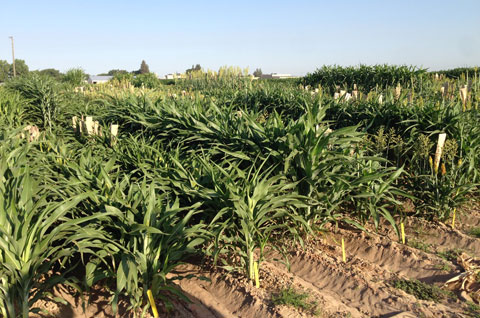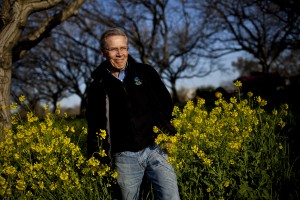Funding Supports Local Food Systems, Farmers Markets and Healthier Eating for SNAP Participants
Agriculture Secretary Tom Vilsack helped to kick off the nation’s harvest season this week by announcing nearly $35 million in new funding through four grant programs to support local and regional food systems, including farmers markets. Secretary Vilsack has named strengthening local food systems as one of the four pillars of USDA’s efforts to revitalize rural economies and communities. Purchases of locally-produced food have surged to nearly $12 billion under Secretary Vilsack’s leadership, while the number of farmers markets has exploded to more than 8,500 from 5,274 in 2009.
The announcement is part of a USDA-wide effort to support President Obama’s commitment to strengthening local and regional food systems. These grants are administered by USDA’s Agricultural Marketing Service (AMS) and Food and Nutrition Service (FNS). Under the current Administration, AMS and FNS have partnered to boost affordable access to local, fresh and healthy foods, which creates a gateway to opportunity for small and mid-size producers and benefits the health of all Americans, regardless of income levels.
“USDA is helping to create economic opportunities for producers, increase access to fresh, healthy food for consumers, and connect rural and urban communities across the country,” said Secretary Vilsack. “Each of the grants announced targets a unique part of the growing market for local foods. We are also expanding access for current SNAP participants to the wonderful array of fresh produce at America’s farmers markets, which is important to a healthy diet.”
USDA’s Agricultural Marketing Service is awarding $13.3 million in Farmers Market Promotion Program grants to 164 marketing and promotion projects involved with farmers markets, Community Supported Agriculture (CSAs), and other direct-to-consumer outlets for local food. Since 2009, this program has funded 902 projects totaling over $59.2 million to support direct marketing efforts for local food.
- These grants include four projects in California – Fresno, Oakland, Los Angeles and American Canyon.
AMS is also awarding $11.9 million in Local Food Promotion Program grants to 160 marketing and promotion projects for intermediary local food enterprises such as food hubs, aggregation businesses, local food processors, and farm-to-institution activities. This program, begun in 2014, has funded 351 projects totaling $24.6 million to support local/regional supply chain activities including processing, aggregating, storing or distributing local and regional food.
- These grants include 17 California projects, ranging from implementing a Joint Powers Agreement (JPA) for local food procurement for school districts in the Pittsburg, CA area, to a cafe and cannery in San Francisco to teach culinary skills and offer leadership training for the low access/low income community.
And AMS is awarding $1 million in matching-grant funds through the Federal-State Marketing Improvement Program. These funds are awarded through State departments of agriculture and other agencies, as well as State colleges and universities. The matching funds will support 15 research projects to find solutions to challenges and opportunities in marketing, transporting, and distributing U.S. agricultural products domestically and internationally. Since 2009, this program has funded 142 projects totaling $8.6 million to explore new market opportunities for U.S. food and agricultural products.
Both the Farmers Market and the Local Food Promotion Programs were made possible by the 2014 Farm Bill. A description of the projects funded by each of these programs is available on the AMS website.
USDA’s Food and Nutrition Service (FNS) administers the Supplemental Nutrition Assistance Program (SNAP) Farmers Market Support Grants, which is awarding $8.1 million in grants for projects in 23 states to enhance the effectiveness of SNAP operations at farmers markets. The new funds support broad SNAP-related activities and costs, including staff training and technical assistance, creating educational materials, and raising awareness among current SNAP participants that their benefits may be used to purchase the healthy, fresh foods at these outlets. Farmers market organizations and associations, non-profit entities, state, local and tribal nations and other organizations engaged in farmers market management were eligible to apply. Grantees will be able to help connect low-income families with fresh, healthy, local food options by expanding SNAP use at these markets. From 2009 to 2014, SNAP redemptions at farmers markets have grown by 350 percent. A description of the projects funded is available on the FNS website.
- Seven California projects received funding to support SNAP outreach, staffing and other efforts at farmers’ markets.
Vilsack continued, “We will continue supporting local and regional food systems, which are drawing young people back to agriculture, generating jobs, and improving quality of life in rural communities. Since 2009, we have seen a 75% growth in farmers markets nationwide and sales of local food rose to an estimated $12 billion in 2014, much of it through sales from farms to local grocers, institutions and restaurants.”
See the original USDA news release here.
















